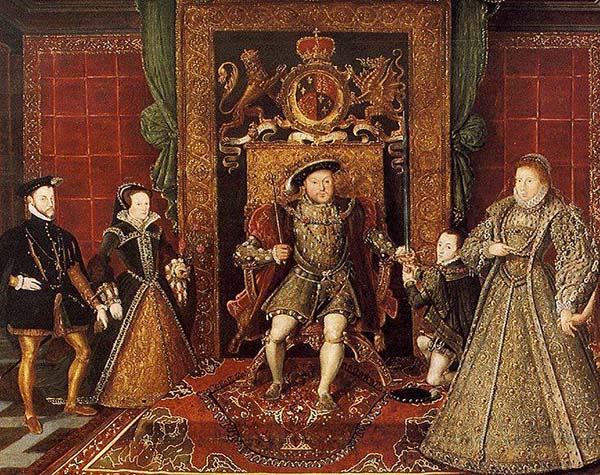A look at what people ate in the sixteenth century and the differences in diet between the rich and the poor.
The Tudor Age (1485-1603) spans just over a century in British History, and it was during this time that many important events occurred. The separation of England from Rome, wars with France and Spain, the discovery of New Worlds and groundbreaking religious reform all took place under the Tudors.
But what foods fuelled the people making these great decisions? What did the lower classes eat and was it really a diet of bland meats for the rich and watered-down oats for the poor? This article explores the food eaten in Tudor times and the existence of the rich-poor divide in relation to food.
The Food of the Rich in Sixteenth Century England
It is a common misconception that Tudor food in rich households was bland, tasteless and consisted of meat with few fruits or vegetables.The inventory for a banquet held by Henry VIII at Windsor in 1528 details a number of spices and exotic foods which had become available. These include ginger, cinnamon and saffron. Food was heavily flavoured with exotic spices and was therefore anything but bland. Fruits, including oranges, apples, prunes and even a watermelon are mentioned in the document, showing that the rich had a large quantity of fresh fruit available to them.
A wide range of meats were eaten by the rich, however, including rabbit, oxen and goat as well as the more familiar beef, chicken and lamb. Turkey was brought to England in 1526, so would have been a new meat for Henry VIII although probably never eaten by his father Henry VII (BritishTurkey.co.uk). Henry VIII was known to have hunted for deer, and then sent his catch to someone close to him, for example Cardinal Wolsey or Anne Boleyn. Henry writes in one of his letters to Anne “that you may the oftener remember me, I send you by this bearer, a buck killed late last night by my hand, hoping, when you eat on it, you will think of the hunter”. (Henry VIII to Anne Boleyn, Love Letters).
The rich also ate heavy custards, pastries and puddings full of saturated fat. Eggs, butter, sugar and cream were all used in abundance, often sourced by the rich from their own estates. According to Cadbury’s, chocolate was not to enter England until the middle of the seventeenth century during the time of Charles II so was not eaten by the Tudors. At the same time coffee made its way to England with the first coffee shops opening in the 1650s, and so Tudors would never have known what is now such a staple drink.
The Diet of the Poor in Tudor Times
Food eaten by the general public in Tudor times would have been very different from that eaten today. There were no processed or convenience foods. Many of the staples of today’s diet either did not yet exist or had just not reached England by the early 1600s. Bread was eaten, but was a much more dense version than the bouncy, fluffy loaves eaten today. Flour was milled by windmills using the wind or the tide, as in the Eling Tide Mill at Hampshire in Southern England which still produces flour by the tide today.
Workers ploughing fields and labouring for long days needed carbohydrate-rich foods to keep up their energy, and may have eaten rice, which had been eaten in Italy since Roman times. Pasta however was not eaten in England until hundreds of years later. The poorer sections of society relied on vegetables and pulses for nutrition and energy supplies. Most meals would have consisted of peas, beans and lentils cooked in soups and stews, mopped up with bread. Fruit was eaten if supplied locally, and the drink of choice was always ale (weak ale for children) as water was considered not clean enough to drink.
The poor also ate meat, but it was expensive and there was not a continuous supply for many people. When people did get hold of it however, they preserved it in salt so that it could be made to last many months.
Tudor Food was Very Different to the Modern Diet
It is difficult to imagine the cooking smells that would have wafted from Tudor kitchens. With many of today’s staple foods not yet in use during the sixteenth century, Tudor people existed on a narrower range of foods than that we eat today.
However Tudor food was anything but bland – for the rich, there were eggy custards and buttery pastries alongside spiced side dishes and roasted meats. For the poor, salted meats and beans added protein to a diet based on locally grown vegetables. There was much less emphasis on convenience and more focus on avoiding waste, making the most of what was available.
It is interesting to think that Henry VII or Henry VIII would never had eaten a potato, or Elizabeth I a bar of chocolate. But with its emphasis on local produce, fresh fruit and vegetables, it could be argued that the Tudor diet for both ends of the social scale contained essential nutrients.
Source:
- ‘Henry VIII: February 1528, 21-29’, Letters and Papers, Foreign and Domestic, Henry VIII, Volume 4: 1524-1530 (1875), pp. 1754-1774.






